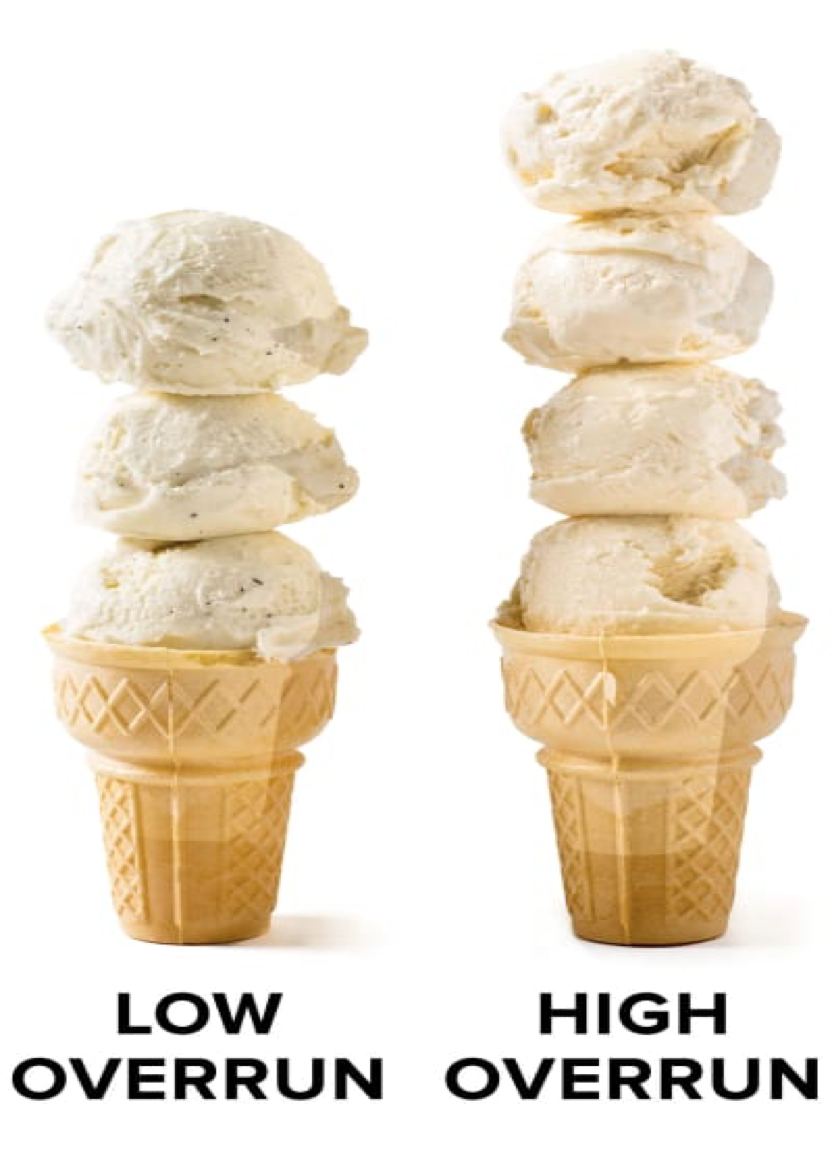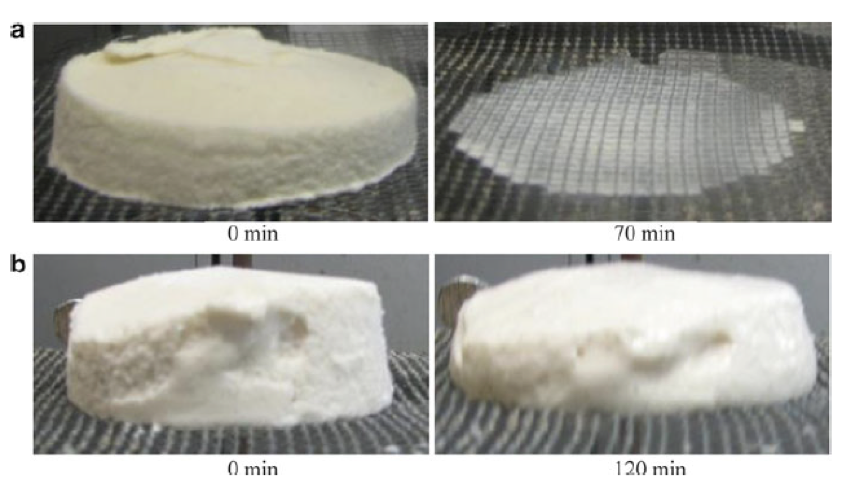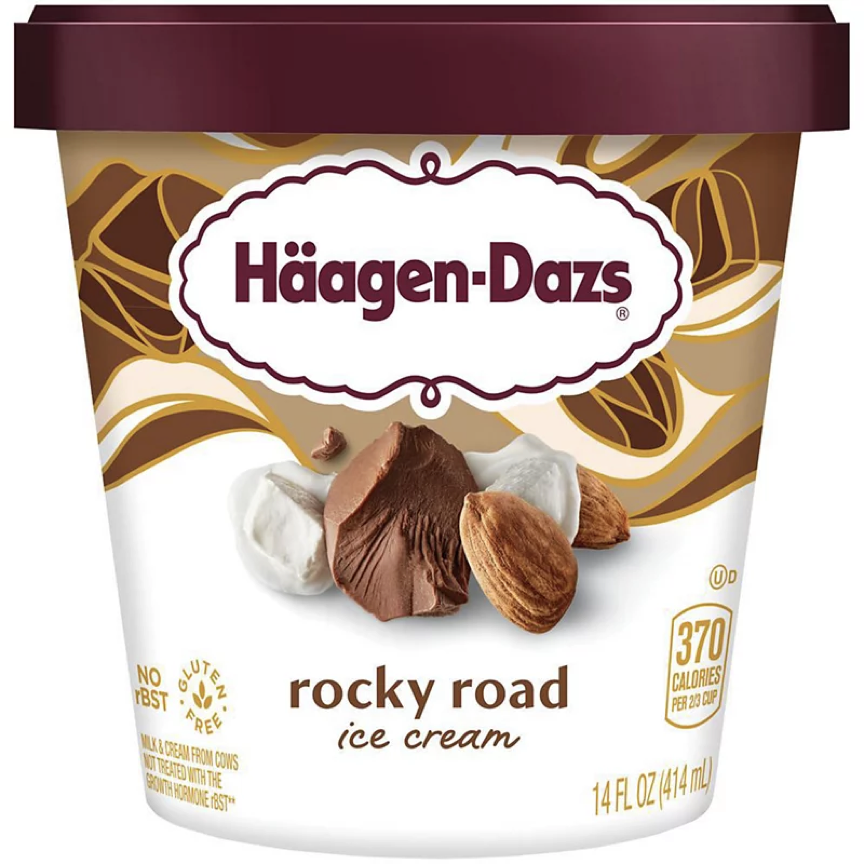Ice Cream Info
Back in the summer of 2012 I wrote about how to choose quality ice cream. Being family reunion time, the topic was timely. And the article subject came to my mind as a result of shopping for our family reunion. It was an early Saturday morning and myself and several other shoppers in the grocery store were staring at the vast array of ice cream choices, trying to figure out which was the very best for our money.

Holy cow, only in America do we have all these confusing choices. I finally did choose a few containers and went on my way. After that experience, I kept wondering, how the heck do you judge the quality of ice cream without opening the container? Reading the label sure doesn’t help (the list of ingredients is just confusing). So I went to www.answers.com for, well, my answer. Here’s what I found then, that I believe bears repeating (family reunions are still going on and we still love ice cream):
“Understanding the concept of overrun will let you easily determine the relative quality of a container of ice cream in a supermarket. "Overrun" is the measurement of the volume of air that is whipped into a given volume of ice-cream mix (cream, sugar, flavoring agents, etc.). If the air is equal to one-half the mix, the overrun is 50 percent. If it is equal to the volume of the mix, the overrun is 100 percent. If it is one and a half times the volume of the mix, the overrun is 150 percent.

“Quality ice creams have lower overruns (roughly 80 percent) than those of low-quality ice creams (100 percent or more) and therefore justifiably cost more than the substandard products, which—quite literally—are a lot of cold air. [my comment: so we do get what we pay for!]
“There is another way to judge overrun before taking the first bite, but this necessitates purchasing the ice cream and taking it home. Place a small sample in a bowl at room temperature. The more quickly it melts in comparison to a high-quality ice cream, the higher its relative overrun is likely to be. A good ice cream takes its time to melt and will not as readily run down the side of a cone on a hot summer day.

“Many producers use stabilizers like gelatin to help retard the melting speed of high-overrun ice creams. If the stabilizers are used with abandon, the ice cream may melt even more slowly than quality ice cream, though that sight will not hoodwink aficionados. They will spot telltale signs, such as the tiny air bubbles that emerge on the surface as the ice cream melts and the chalkiness or gumminess of its texture. [my comment: YUK.]
“To test this information out, try this ice cream experiment. Go to your supermarket. Take two quart-sized containers of ice cream (one expensive, one inexpensive) to the customer-use scale in the produce department. The ice cream with larger air, smaller cream content will be the "lighter" of the two.”
We obviously want an ice cream with more cream, not less. And I want one with the fewest mystery ingredients possible. What’s wrong with wanting to eat just FOOD—real honest-to-goodness food?

One such brand is Haagen-Dazs. Haagen-Dazs is a Brooklyn-born, super-premium ice cream company that started in the early '60s by Reuben and Rose Mattus. Mattus wanted to make an ice cream he could be proud of, so he increased the butterfat to at least 15 percent, refused to use preservatives and stabilizers and instead concentrated on natural ingredients, and cut the overrun (remember…the amount of air pushed into ice cream) to 20 percent. This standard created a Mercedes-Benz niche of luxury ice creams and significantly changed the competitive nature of the ice cream industry.
While commercial ice cream brands don’t list their overrun percentage on their labels, you can get a pretty good idea of what you’re getting by simply looking at the weight indication on the carton. If you were to compare the weight of Haagen-Dazs with the competition, you would realize you are actually getting more bang for your buck.

And by the way, another good bet is Ben and Jerry’s ice creams. Anything from these fellas also shows up with the fewest additives and a very low overrun percentage (24 percent). Ben & Jerry are coming to my house tonight!
So from the moment I learned what to look for when buying ice cream, I’ve never been disappointed. Now that you know that commercial brands of ice cream are not created equal, and now that you know what to look for, this label reading won’t be so overwhelming, and you can avoid disappointment, too!

Holy cow, only in America do we have all these confusing choices. I finally did choose a few containers and went on my way. After that experience, I kept wondering, how the heck do you judge the quality of ice cream without opening the container? Reading the label sure doesn’t help (the list of ingredients is just confusing). So I went to www.answers.com for, well, my answer. Here’s what I found then, that I believe bears repeating (family reunions are still going on and we still love ice cream):
“Understanding the concept of overrun will let you easily determine the relative quality of a container of ice cream in a supermarket. "Overrun" is the measurement of the volume of air that is whipped into a given volume of ice-cream mix (cream, sugar, flavoring agents, etc.). If the air is equal to one-half the mix, the overrun is 50 percent. If it is equal to the volume of the mix, the overrun is 100 percent. If it is one and a half times the volume of the mix, the overrun is 150 percent.

“Quality ice creams have lower overruns (roughly 80 percent) than those of low-quality ice creams (100 percent or more) and therefore justifiably cost more than the substandard products, which—quite literally—are a lot of cold air. [my comment: so we do get what we pay for!]
“There is another way to judge overrun before taking the first bite, but this necessitates purchasing the ice cream and taking it home. Place a small sample in a bowl at room temperature. The more quickly it melts in comparison to a high-quality ice cream, the higher its relative overrun is likely to be. A good ice cream takes its time to melt and will not as readily run down the side of a cone on a hot summer day.

“Many producers use stabilizers like gelatin to help retard the melting speed of high-overrun ice creams. If the stabilizers are used with abandon, the ice cream may melt even more slowly than quality ice cream, though that sight will not hoodwink aficionados. They will spot telltale signs, such as the tiny air bubbles that emerge on the surface as the ice cream melts and the chalkiness or gumminess of its texture. [my comment: YUK.]
“To test this information out, try this ice cream experiment. Go to your supermarket. Take two quart-sized containers of ice cream (one expensive, one inexpensive) to the customer-use scale in the produce department. The ice cream with larger air, smaller cream content will be the "lighter" of the two.”
We obviously want an ice cream with more cream, not less. And I want one with the fewest mystery ingredients possible. What’s wrong with wanting to eat just FOOD—real honest-to-goodness food?

One such brand is Haagen-Dazs. Haagen-Dazs is a Brooklyn-born, super-premium ice cream company that started in the early '60s by Reuben and Rose Mattus. Mattus wanted to make an ice cream he could be proud of, so he increased the butterfat to at least 15 percent, refused to use preservatives and stabilizers and instead concentrated on natural ingredients, and cut the overrun (remember…the amount of air pushed into ice cream) to 20 percent. This standard created a Mercedes-Benz niche of luxury ice creams and significantly changed the competitive nature of the ice cream industry.
While commercial ice cream brands don’t list their overrun percentage on their labels, you can get a pretty good idea of what you’re getting by simply looking at the weight indication on the carton. If you were to compare the weight of Haagen-Dazs with the competition, you would realize you are actually getting more bang for your buck.

And by the way, another good bet is Ben and Jerry’s ice creams. Anything from these fellas also shows up with the fewest additives and a very low overrun percentage (24 percent). Ben & Jerry are coming to my house tonight!
So from the moment I learned what to look for when buying ice cream, I’ve never been disappointed. Now that you know that commercial brands of ice cream are not created equal, and now that you know what to look for, this label reading won’t be so overwhelming, and you can avoid disappointment, too!
Sources:
- www.eatthisnotthat.com
- www.cooksillustrated.com
- www.icecreamscience.com
- www.heb.com
- www.unileverusa.com
 Alice Osborne
Alice Osborne
Weekly Newsletter Contributor since 2006
Email the author! alice@dvo.com
